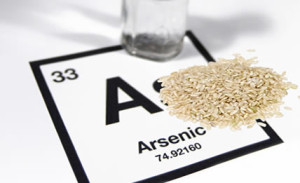 Arsenic is a heavy metal that is a known carcinogen (cancer-causing chemical) and also has adverse effects on the immune system and other body functions. Did you know that arsenic has been found in different types of rice?
Arsenic is a heavy metal that is a known carcinogen (cancer-causing chemical) and also has adverse effects on the immune system and other body functions. Did you know that arsenic has been found in different types of rice?
A Consumer Reports article from 2012 first reported the story, and recommended that children consume no more than one serving of rice cereal per day. It is especially easy for infants or children to go over the recommended daily limits for arsenic because their body size is much smaller.
Interestingly, white rice appears to have less arsenic than brown rice because the arsenic accumulates in the external layers of rice grains which are removed when the rice is polished. While brown rice is slightly more nutritious, it is significantly harder to digest, especially for people with gut issues. Therefore, I typically recommend white rice in moderation for most people.
Research shows that white basmati rice from California, India, and Pakistan is significantly lower in arsenic than other forms of rice.
With all forms of rice, washing the rice well and discarding the water helps significantly reduce the arsenic content by about 30%, which is very important although a small amount of nutrients might be lost. Soaking rice overnight also helps make the rice more digestible and reduce the levels of so-called anti-nutrients.
For more information about this topic please click here. Please post in the comments if you have any other questions about rice, which remains a healthy option as a gluten-free grain.




Thanks Akil! What about black rice? I have been enjoying it for my sushi- any thoughts on it?
Ingrid, black rice appears to be relatively low in arsenic. This PDF from the FDA confirms that:
http://www.fda.gov/downloads/Food/FoodborneIllnessContaminants/Metals/UCM352467.pdf